
Australian Journal of Chemistry
Volume 69 Number 10 2016
RESEARCH FRONT: Nucleic Acids
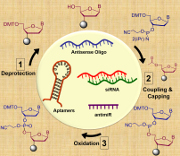
Functional nucleic acid-based therapeutic technologies have attracted significant interest in recent years for targeting the underlying molecular pathogenesis of various diseases. This research front contains a selection of papers that showcase current research in nucleic acid chemistry.
CH16079Preclinical Imaging of siRNA Delivery
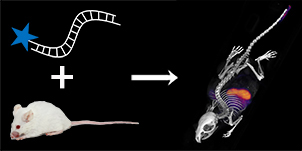
Small interfering RNA (siRNA) is a class of therapeutic with extremely high potential. However, further understanding of how siRNA behaves in vivo is still required before significant uptake into clinical application. To this end, molecular imaging has been utilised to gain a better understanding of administered siRNA and delivery vehicle biodistribution and pharmacokinetics.
CH16020Therapeutic Potential of miR-494 in Thrombosis and Other Diseases: A Review
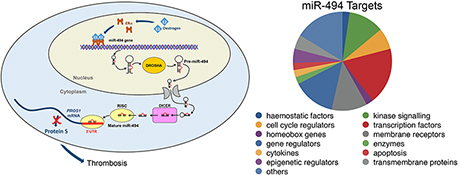
Many studies have identified the microRNA, miR-494, as a regulator of many cellular processes, and we have demonstrated the role of miR-494 in regulating thrombosis via direct targeting of the anticoagulant factor, Protein S. Changes in miR-494 levels have been reported to be detectable in various biological fluids, thus making miR-494 a good diagnostic marker and therapeutic target.
CH16021Double-Headed Nucleotides: Building Blocks for New Nucleic Acid Architectures
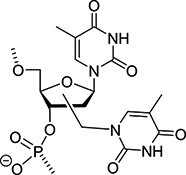
Double-headed nucleotides are designed for using the recognition potential of the additional nucleobases in various nucleic acid constructs. Presented here is a review of the double-headed nucleotide monomers investigated so far and their effects in nucleic acid duplexes and other secondary structures.
CH16272Non-Equilibrium Capillary Electrophoresis of Equilibrium Mixtures-Based Affinity Separation and Selective Enrichment of a Long-Length DNA Aptamer
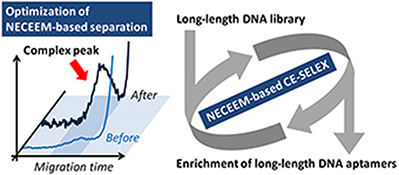
Peak separation of a long-length DNA aptamer complexed with its target via non-equilibrium capillary electrophoresis of equilibrium mixtures (NECEEM) and its enrichment through selection process cycles have been demonstrated.
CH16211E-Cadherin Aptamer-Conjugated Delivery of Doxorubicin for Targeted Inhibition of Prostate Cancer Cells
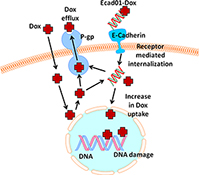
Doxorubicin (Dox) is a substrate of drug resistance marker P-glycoprotein (P-gp) and, therefore, on entry is effluxed out of cells via P-gp activity. The E-cadherin aptamer–doxorubicin conjugate (Ecad01-Dox) can enter the cell directly as well as by receptor (E-cadherin)-mediated internalization, leading to increased intracellular uptake of Dox.
CH15812An Organobase (TBD)-Anchored Mesoporous Silica Nanoparticle-Catalyzed Green Synthesis of Dihydropyrano[2,3-c]pyrazoles

An efficient, mild, and environmental friendly method has been developed for the synthesis of dihydropyrano[2,3-c]pyrazole over TBD-MSN catalyst by assembling ethyl acetoacetate, hydrazine hydrate, different aldehydes, and malononitrile affording the product in excellent yields. The catalyst was reused several times with retention of activity.
CH16067Loading of a Phenanthroline-Based Platinum(II) Complex onto the Surface of a Carbon Nanotube via π–π Stacking
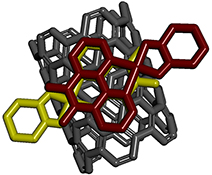
The anticancer metal complex [(1,10-phenanthroline)(1S,2S-diaminocyclohexane)platinum(ii)]2+ forms a supramolecular complex with multi-walled carbon nanotubes through π–π stacking.
CH16119Highly Ordered Honeycomb Film Formation of Linear Polymers by the Breath Figure Technique
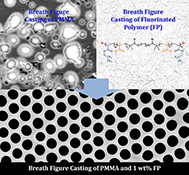
The incorporation of a simple fluorinated polymer additive in small amounts facilitated the formation of regular honeycomb (HC) films from polymers. Typically highly ordered HC films are difficult to form from such polymers. From analysis of the properties of these mixtures, a new hypothesis was developed, which will provide a new tool to guide and allow the use of a broader range of polymers to prepare HC films.
CH16100Prodrug Micelles Based on Norbornene-Functional Poly(lactide)s Backbone for Redox-Responsive Release of Paclitaxel
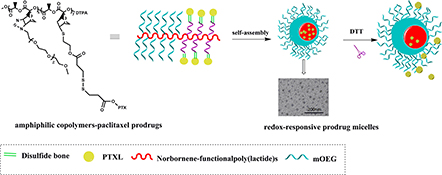
A novel norbornene-functional poly(lactide)s backbone-based redox-responsive prodrug, P(LA-g-mOEG)-b-P(LA-SS-PTX), was successfully synthesized by combination of ring-opening polymerization, click, ester, and condensation reactions. The self-assembled micelles formed from paclitaxel prodrugs displayed a spherical shape with appropriate sizes for enhanced permeability and retention effect and a narrow size distribution. With disulfide linkages, prodrug micells showed redox-responsive drug release behaviours in response to the intracellular level of reducing potential.
CH16189Template Polymerization of Acrylamide in Ethanol/Water Mixtures
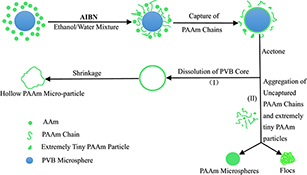
Irregular hollow polyacrylamide (PAAm) particles were prepared in ethanol/water mixtures by template polymerization of acrylamide using polyvinyl butyral (PVB) as the template material and 2,2′-azobisisobutyronitrile (AIBN) as the initiator. It was found that the shrinkage and dehydration on hollow PAAm particles results in the formation of micro-sized irregular hollow PAAm particles.
CH16064Ultrasonic Synthesis and Properties of Sodium Lignosulfonate-grafted Poly(Acrylic Acid-co-Vinyl Alcohol) Composite Superabsorbent Polymer
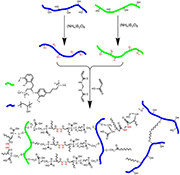
Under the initiation of ammonium persulfate, acrylic acid was successfully grafted onto the polyvinyl alcohol and sodium lignosulfonate in the reaction system with the assistance of ultrasound, and then an environmental friendly and biodegradable superabsorbent with semi-interpenetrating networks structure was formed due to the binding effect of N,N′-dimethyl acrylamide.
CH16073Hydrolysis of Queensland Fruit Fly, Bactrocera tryoni (Froggatt), Attractants: Kinetics and Implications for Biological Activity
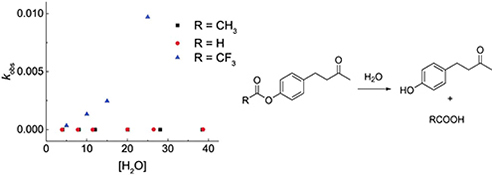
The kinetics of hydrolysis of the most commonly used attractant, cuelure (CL), for Queensland fruit fly, Bactrocera tryoni (Froggatt), and two closely related compounds, melolure (ML) and a newly developed lure, 4-(4-(2,2,2-trifluoroacetoxy)phenyl)-2-butanone (RKTA), were quantitatively investigated by GC-FID.
CH16096Rational Design of an Orthogonal Molecular Interaction System at the Complex Interface of Lung Cancer-Related MDM2 Protein with p53 Peptide
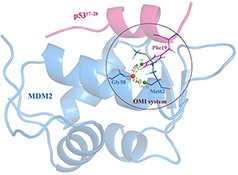
An orthogonal molecular interaction (OMI) system between a native hydrogen bond (H-bond) and a constructed halogen bond (X-bond) across the complex interface of oncogenic protein MDM2 with the p53 peptide was designed computationally. Fluorescence polarization assays revealed that the designed OMI system can considerably improve peptide binding affinity to MDM2.
CH16097tert-Butyldimethylsilyl Amine (TBDMS-NH2): A Mild and Green Reagent for the Protection of Benzyl Alcohols, Phenols, and Carboxylic Acids under Solvent-Free Conditions

Herein, we present the use of tert-butyldimethylsilyl amine (TBDMS-NH2) as a silylating reagent for phenols, benzyl alcohols, and carboxylic acids under solvent-free conditions. Interestingly, this process is rapid and does not involve the formation of HCl unlike other protection processes.
CH16060The Effects of SiO2 and CeO2 Addition on the Performances of MnOx/TiO2 Catalysts
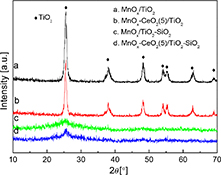
MnOx-CeO2/TiO2-SiO2 were prepared by an impregnation method and their selective catalytic reduction of NO with NH3 at low temperature was evaluated. NO conversion of the MnOx/TiO2-SiO2 catalyst could be improved by the addition of CeO2 in the temperature range of 100–180°C. MnOx-CeO2/TiO2-SiO2 with 10 wt-% CeO2 showed the highest activity with 96 % NO conversion at 180°C.
CH16132Backbone Phosphonamide-Functionalized Imidazol-2-ylidene Complexes
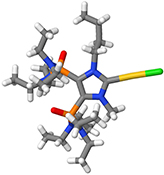
The synthesis of metal (Cr, Mo, Rh, Au) complexes bearing 4-phosphonamide and 4,5-bis(phosphonamide)-imidazol-2-ylidene ligands (NHCP) is reported. Phosphonamidyl NHC ligands are generated by deprotonation of imidazolium salts or imidazolium-based ionic liquids.
CH16369Crystal Structures of the Amide and Iminol Tautomers O-(3,5-dinitrobenzoyloxy)benzohydroxamate. A Case of a Disappearing Solvate?

O-(3,5-dinitrobenzoyloxy)benzohydroxamate crystallizes as its imino tautomer in the presence of dimethyl sulfoxide and its amide tautomer in the absence of dimethyl sulfoxide.



